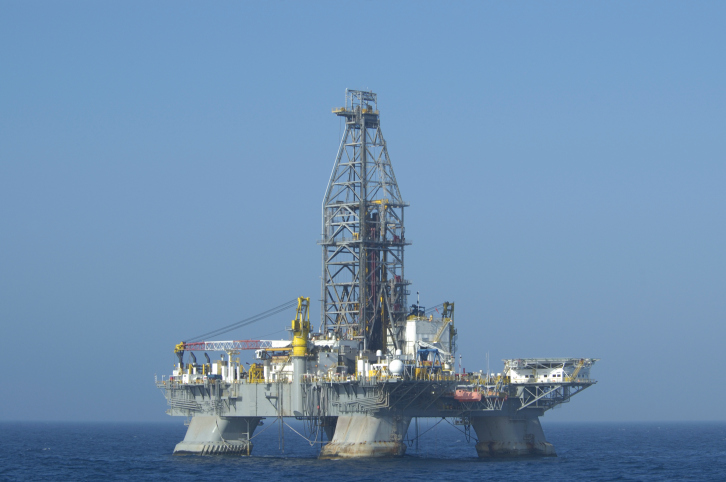
The movement in the price for Brent crude is somewhat different from the rise in the price of WTI. In mid-April, the spot price for Brent crude was around $97 a barrel, and it now stands at about $113 a barrel, a rise of about 16%. That change is much more in line with the best performers among the big oil companies.
The big gainers, both around 16%, are ConocoPhillips (NYSE: COP) and France’s Total S.A. (NYSE: TOT). Chevron Corp. (NYSE: CVX) is up about 3.5%, BP PLC (NYSE: BP) is up about 1.5% and Exxon Mobil Corp. (NYSE: XOM) is down about 1%. Because Brent crude has replaced WTI as the global benchmark, a gain of 16% to match the price hike in Brent crude is about as good as it gets.
Conoco was able to increase second-quarter production by 4% year-over-year, so even though its realized price per barrel was flat with the year-ago price, revenues and profits were up. At Exxon production was down nearly 2%. At Chevron and BP, reported production was down about 1.5%. And at Total, liquids production was down 5% but natural gas production pushed barrels of oil equivalent to a gain of 1% in total hydrocarbons production.
A further influence on crude prices is the so-called fear premium, which reflects traders’ thinking about the impact on prices of events like unrest in Egypt and U.S. military action in Syria. This premium adds mostly volatility to crude prices, and the biggest piece of any gain will go to traders, not producers. The fear premium is helping keep the oil market in backwardation, with current spot prices well below forward prices. Thus, even if a big oil company wanted to hedge future production, that company does not stand to be rewarded by performing hedges.
We have looked at five of the world’s largest oil and gas companies in an effort to spot a value play in among the group. Here is our take.
Exxon Mobil Corp. (NYSE: XOM) closed at $87.98 on Thursday and has a market value of about $387 billion. The consensus target price from Thomson Reuters is around $95.20, and the 52-week range is $84.70 to $95.49. Exxon has a dividend yield of 2.9%. The implied upside to the consensus target is 8.2%, and we note that the target price is slightly below the 52-week high.
Chevron Corp. (NYSE: CVX) closed at $123.89 last night and has a market value of about $239 billion. The consensus target price is around $132.50, and the 52-week range is $100.76 to $127.83. Chevron has a dividend yield of 3.3%. The implied upside to the consensus target is 6.9%, and the target price is above the 52-week high.
BP PLC (NYSE: BP) closed Thursday at $42.10 and has a market value of about $133 billion. The consensus target price is around $48.70 and the 52-week range is $39.58 to $45.45. BP has a dividend yield of 5.2%. The implied upside to the consensus target is 15.7%, and again the target price is above the 52-week high.
ConocoPhillips (NYSE: COP) closed at $68.78 on Thursday and has a market value of about $84 billion. The consensus price target is around $69.00, and the 52-week range is $53.95 to $69.38. Conoco pays a dividend yield of 4.0%. The stock is essentially fully valued at last night’s closing price.
Total S.A. (NYSE: TOT) closed at $56.70 last night and has a market value of about $129 billion. The consensus price target on the shares is $58.20, and the 52-week range is $45.93 to $57.07. Total pays a dividend yield of 4.8%. The implied upside on the stock is about 2.6%.
Conoco and Total are at and very close to fully valued, respectively. Of 23 analysts’ recommendations cited at MarketWatch, 11 rate Conoco stock at Buy or Overweight. Out of 29 ratings, 20 list Total either as Buy or Overweight.
BP has its own problems related to the 2010 Macondo well disaster, and its relatively high implied gain could easily evaporate. Of 33 analysts’ recommendations, 20 rate the stock as a Hold. An even higher proportion, 17 out of 24 analysts, rate Exxon as a Hold, while 13 of 23 analysts rate Chevron as either Buy or Overweight.
All these major oil companies, except for Conoco, also own and operate refineries. If crude oil prices rise, their refineries pay more for crude, offsetting some of the gains they might otherwise expect. Conoco is worth keeping an eye on to see if the price target moves. Chevron gets the analysts’ vote as a better bet than Exxon, and that seems like the right call.
Are You Ahead, or Behind on Retirement?
If you’re one of the over 4 Million Americans set to retire this year, you may want to pay attention. Many people have worked their whole lives preparing to retire without ever knowing the answer to the most important question: am I ahead, or behind on my goals?
Don’t make the same mistake. It’s an easy question to answer. A quick conversation with a financial advisor can help you unpack your savings, spending, and goals for your money. With Zoe Financial’s free matching tool, you can connect with trusted financial advisors in minutes.
Why wait? Click here to get started today!
Thank you for reading! Have some feedback for us?
Contact the 24/7 Wall St. editorial team.



